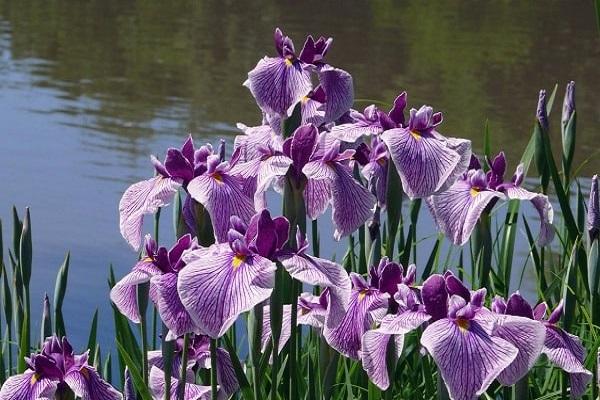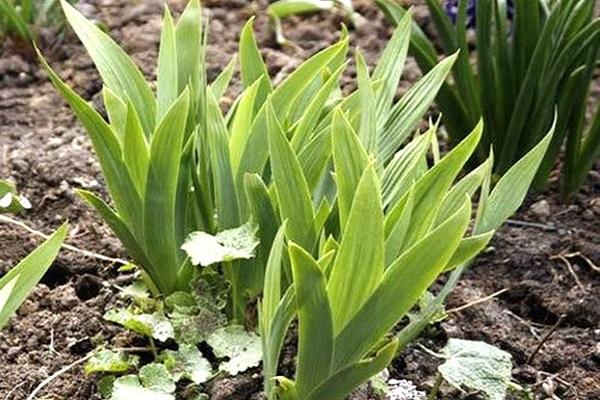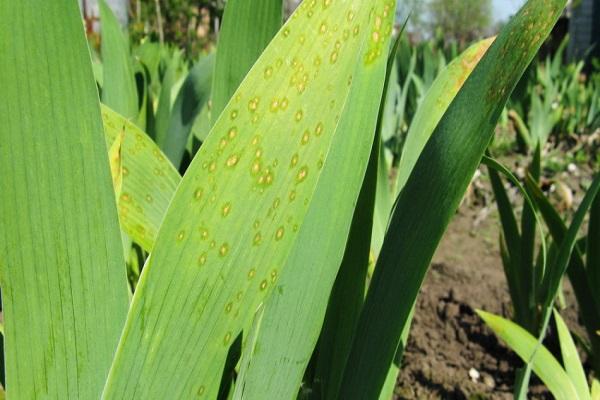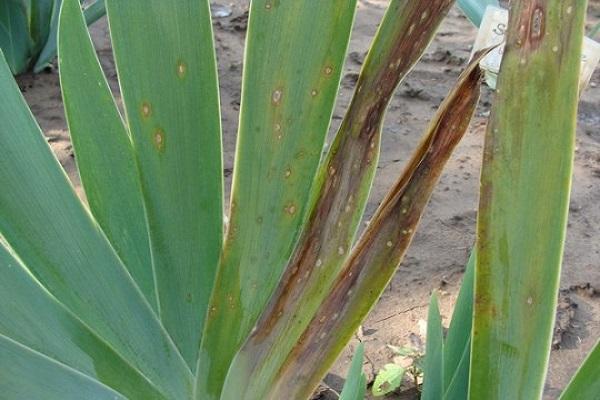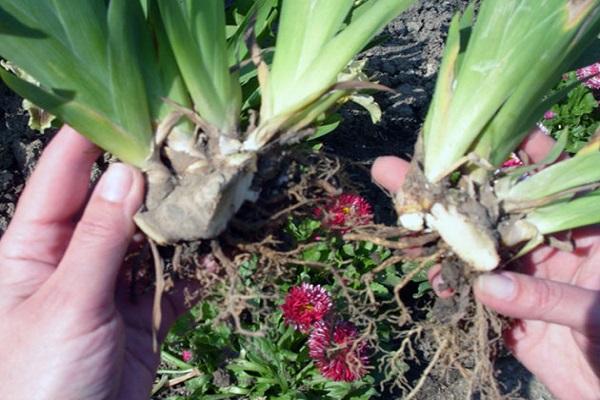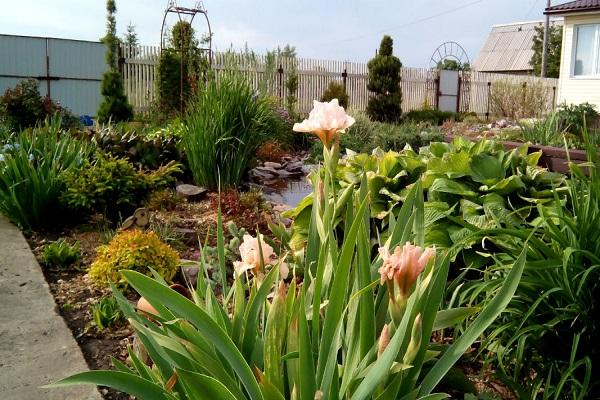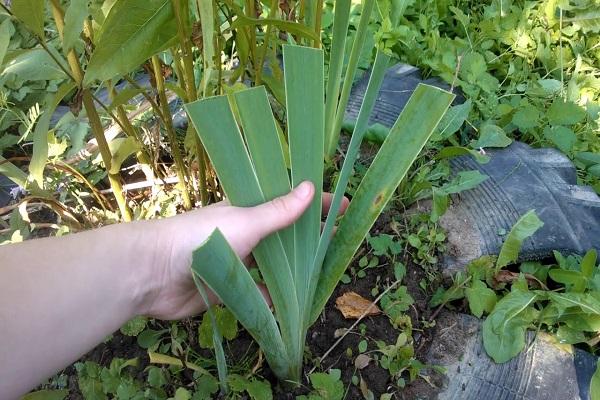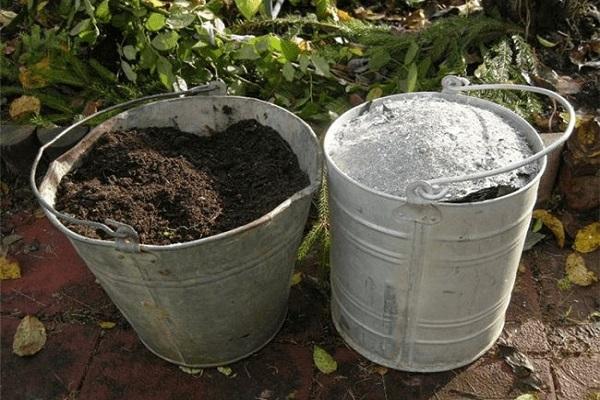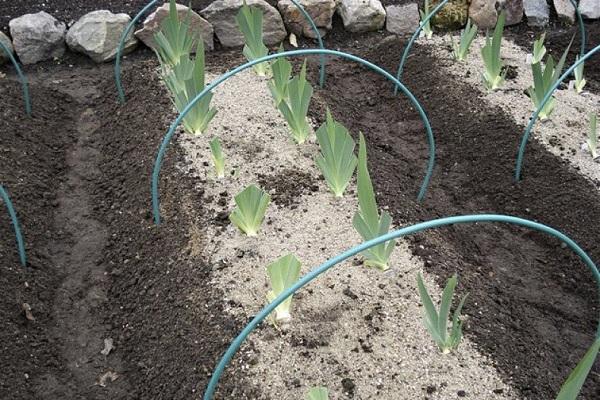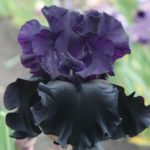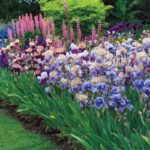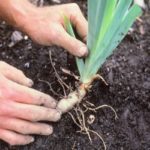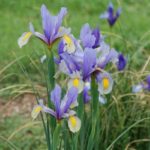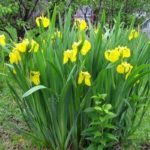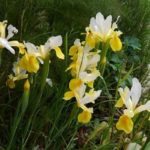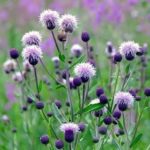Blooming iris is an excellent decoration for any flower bed. Some gardeners in the process of growing this flower are faced with the fact that it stops blooming. To get rid of this problem, you need to figure out why irises don’t bloom and what to do if the bushes have only leaves and no flowers.
Irises do not bloom: reasons
There are several reasons why it may not bloom Siberian iris. It is recommended that you become more familiar with the common causes of flowering problems.
Errors during landing
Most often, flowers do not bloom due to improper planting. Many inexperienced gardeners plant seed in holes that are too deep. Because of this, the plants will not only bloom worse, but also grow more slowly.
It is quite easy to check that the plant is planted correctly. To do this, you need to carefully examine the root collar. If it is only one third dug into the ground, it means the flowers are planted shallowly. When the collar is in the soil, it lacks sunlight, which negatively affects growth. In this case, you will have to dig up the seedlings and replant them. At the same time, they must be dug out carefully so as not to damage the root system.
Wrong place
The growth and flowering of plants is influenced by the location in which they are grown. Therefore, experienced gardeners recommend taking the choice of a site for planting irises seriously.
These are light-loving plants that need to be planted in well-lit areas. Without enough sunlight, the plant will grow slowly and bloom poorly. To solve the problem with poor lighting, the irises will have to be transplanted to another place. It is better to transplant at the beginning of August or at the end of July. This is the most favorable period for planting crops. They are transplanted to open areas that are not shaded by buildings, trees or tall bushes.
Lack of nutrition
Any plant needs periodic feeding, and irises are no exception. These flowers can fully develop only with regular application of fertilizers to the soil. If you do not feed the planted flowers, they will bloom worse. Fertilizers are applied to the soil three times per season.The first two times the crops are fed before flowering begins, and the third time - after.
There are several signs indicating a lack of nutrients:
- fallen buds;
- slow stem growth;
- curling and drying of leaves;
- slow root development.
If it turns out that irises do not bloom due to a lack of fertilizers, you must immediately add mineral and organic fertilizers to the flowerbed.
Improper watering
Some gardeners believe that there is no need to water irises, as they cope well with drought. However, without regular watering, they do not bloom, since with a lack of moisture, root growth deteriorates and the formation of buds stops.
Flowering is also negatively affected by excess soil moisture, which increases due to too frequent watering. Wet soil promotes rotting of the root system. Therefore, during irrigation, it is recommended to monitor the condition of the soil.
If the flowers have already suffered due to lack of moisture, it is recommended to fill them with water several times.
Root system growth
A characteristic feature of irises is that their root system grows quickly. The roots of seedlings that are planted too close to each other become crowded and develop more slowly. This leads to a slowdown in the development of the stem and the cessation of flowering. In addition, due to crowded conditions, the seedlings' immunity is weakened, and they are more likely to get sick and be attacked by pests.
To solve this problem, every 4-6 years the planted iris bushes are transplanted to new places. At the same time, they should be planted in larger flower beds so that neighboring plants do not interfere with the planted irises.
Damage in winter
There are times when irises stop blooming after a harsh and frosty winter.Most often, this happens if you do not cover the flowerbed with covering material in the fall, which protects the seedlings from low temperatures. The consequences of unsuccessful wintering are difficult to notice, since they do not appear immediately. At first the plant develops normally, but over time you may notice that flower buds do not form on them.
In order to promptly identify damaged plants, you need to carefully examine their stems and leaves, on which dark spots may appear. All damaged areas of flowers will have to be cut off with a knife.
Diseases or pests
Another common reason for the deterioration of flowering is the attack of pests and the appearance of diseases. Most often, diseases appear after the weakening of plant immunity, which occurs after winter freezing of the roots or due to thickened plantings.
In order to promptly identify the symptoms of a particular pathology, it is necessary to regularly conduct a visual inspection of the flowers. Yellowing leaves indicate the presence of diseases such as dry rot, fusarium, rust and spotting. To prevent the development of diseases, plants are periodically treated with fungicidal solutions.
Unfavorable weather
Sometimes flowering stops due to unfavorable weather conditions. Irises do not bloom in high humidity or when it rains frequently. Also, problems with flowering occur with sudden temperature changes.
How to properly care?
In order for irises to bloom normally, you need to properly care for them.
Watering
It's no secret that irises need to be watered periodically to prevent them from drying out. Particular attention is paid to moisture in dry weather, when the soil dries out quickly. On such days it is irrigated every two days.Watering irises daily is contraindicated, since due to excessive moisture, the root system accumulates too much water, which negatively affects the wintering of the plants.
When watering, use heated and settled water. It is poured under the roots of flowers so that the liquid does not fall on their leaves.
Trimming
Trimming of irises is carried out after the flowers have completely dried. To carry out this procedure, use special garden shears. First, the inflorescence is removed, after which the flowering shoot is cut off. After pruning, a trimmed stem 1-2 centimeters high should remain above the soil surface.
Some people prune during the flowering period, but this should not be done. At this time, the plant actively accumulates nutritional components for further wintering.
Top dressing
When conducting feeding irises use phosphorus-potassium fertilizers, which stimulate the growth of flower buds. To prepare a fertilizing solution, add 20 grams of phosphorus and potassium to five liters of water. The prepared mixture is enough to water 4-5 bushes.
Experienced flower growers do not recommend fertilizing flowers with manure, as it can cause root rot. It is also necessary to add less nitrogen fertilizing, which impairs the growth of buds. If irises are grown in acidic soil, the area is periodically watered with lime mixture or wood ash.
How to stimulate plant flowering?
In order for a flower to bloom in autumn or summer, you need to familiarize yourself with the features of stimulating the process.
It is known that irises bloom extremely rarely in unfavorable conditions. Therefore, to stimulate the appearance of buds, you need to make sure that the plant has enough nutrients and moisture.Irises need to be periodically watered and fed with fertilizers. You should also take care of the lighting of the flowers and transplant them to an area that is constantly illuminated by sunlight.
Conclusion
Gardeners sometimes have to deal with poor flowering of planted irises. To get rid of this problem, you need to become familiar with the reasons for its occurrence and the features of stimulating flowering.

